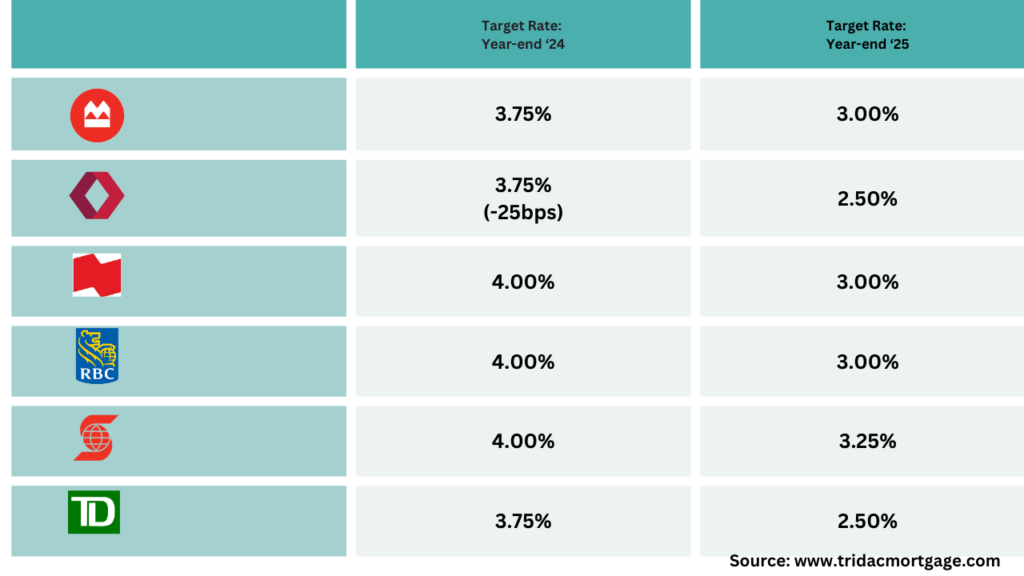- The BOC announces a third consecutive 0.25% rate cut.
- The overnight lending rate fell to 4.25% (Lowest since December 2022)
- The retail prime rate (what you and I pay) will drop to 6.45%.
- The 25bps rate drop will lower your monthly variable rate payment by approximately $15/mth per $100,000 of principal balance.
This morning, the Bank of Canada made headlines by cutting the prime rate by 0.25%. This decrease shifts the retail prime rate from 6.70% to 6.45%, offering some relief to Canadians with mortgages and lines of credit. For homeowners, this reduction translates into approximately $15 less per month for every $100,000 of mortgage debt. While this immediate impact is noteworthy, the real significance of the Bank’s decision lies in the broader economic implications and future outlook.
Understanding the Rate Cut
The Bank of Canada’s move to lower the prime rate aligns with its ongoing strategy to support economic growth amidst a softer job market and signs of excess supply in the economy. By reducing the cost of borrowing, the Bank aims to stimulate spending and investment, which in turn should help balance out economic conditions and bring inflation down.
Rate cut expectations
Banks and analysts have come around to the view that the BoC will continue cutting rates throughout the remainder of 2024 (October & December).
Encouraging inflation data along with meaningful signs of a slowing Canadian economy leave the door open for the central bank to deliver a quarter-point cut at each of it’s next meetings this year.
As we look forward into 2025 the trend of rate cuts is expected to continue. The market is pricing in anywhere between an additional 1.00% to 1.75% cut expected by the end of next year.
The table below summarizes the Big 6 Banks policy rate expectations, with any changes from the previous table in parentheses:

Economic Context
The Canadian economy is currently experiencing excess supply, which means there is more availability of goods and services than demand. This imbalance helps moderate inflation pressures. Additionally, a weakening job market suggests that the economy needs more support to boost employment and overall economic activity. By lowering interest rates, the Bank of Canada is making it cheaper for individuals and businesses to borrow, thereby encouraging economic activity.
Impact on Fixed-Rate Mortgages
It’s important to note that today’s rate cut affects the variable or prime rates but has no direct impact on fixed-rate mortgages. Fixed rates are influenced by Canadian bond yields, which are determined by the bond market’s expectations of future economic conditions. Since the bond market had already anticipated this rate reduction, fixed-rate mortgages are unlikely to change in response to today’s announcement.
Looking Ahead
The next Bank of Canada meeting is scheduled for October 23rd. Until then, if you have concerns about how the recent rate cut affects your mortgage or financial situation, don’t hesitate to reach out. Staying informed and proactive can help you navigate these changes effectively.
In summary, while today’s prime rate cut offers some immediate financial relief for those with variable-rate loans, the broader economic context and future trends will shape the long-term impacts. The Bank of Canada’s decision reflects a cautious optimism about supporting the economy, with the expectation that less restrictive interest rates will contribute to overall economic stability.